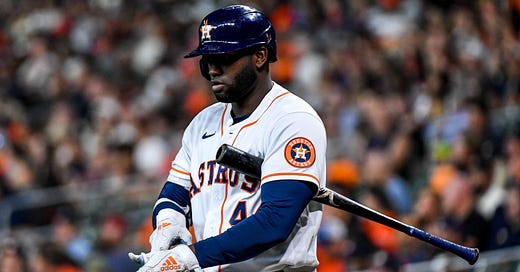Jordan Montgomery took control from his first matchup against the Astros lineup.
He could be seen all Sunday night before leading the Rangers to a 2-0 victory in Game 1 of the ALCS. But within his gem of 19 scoreless outs, there were key situations that made the difference. Without a doubt, neutralizing Yordan Álvarez with three strikeouts was one of the…




